Saturday Reader's Mailbag Extravaganza - (3/11/23) - Answers
Paid subscribers' questions are answered in long form.
All right everyone, so this here’s the inaugural debut of the reader’s mailbag we’re try out as an idea. It’s meant to give the Pledgers a little perk of being able to ask more long form questions I can answer here. As I said in the first private post, that’s not to cast aspersions on my free subscribers, you’re highly valued as well and as you know I already answer most of your questions in the comments sections anyway. But this is just to give a little added perk to the paid Pledgers.
I’ll keep the questioner’s anonymous just in case they didn’t want to be called out by name for whatever reason. So let’s start off with the first question:
1
It turns out, the first question was several people asking my bio or background. For now, I prefer to maintain anonymity just for the sake of prudence. But I can share a few pertinent, contextualizing details.
Firstly, it always seems customary for people to describe their key ‘crossing of the Rubicon’ moment for when they ‘awakened from the Matrix’, so to speak. It’s then doubly customary for most people/pundits to name the 9/11 attacks as that key moment, from which the world never returned. I can’t say I buck the trend—9/11 was also for me a paradigm-shifting catalyst which started down a rabbit-hole burrowing path from which I never returned back to the status quo.
The 2008 Russian-Georgia conflict, too, played a key moment in my actualization. At the time, Russian-American relations were in some ways on the upswing, Putin and Bush signing some critical accords in the previous years.
The US however, was viewing Russia as emergent due to the fact that the Second Chechen War was drawing to an end (the insurgency period of the war was officially declared over by 2009), and NATO needed a new way to keep the Russian military off-balance and distracted, so that they wouldn’t interfere with NATO’s ongoing plans to destroy and re-order the Middle East (Libya was just around the corner in 2011).
So in 2008, they signed a memorandum for giving both Ukraine and Georgia a NATO Membership Action Plan (MAP). This immediately, and intentionally, brought Russia to a military footing, and so all they needed to do was light the spark—which they subsequently did in 2008, a mere four months after Putin had left office, and Medvedev had become president.
The timing wasn’t coincidental—the CIA planners likely thought it was their perfect moment to catch Russia offguard under a new, wet-eared and unproven president. Unfortunately, what they didn’t know was that Putin had already prepared the full intricate contingency plans for military action months earlier, knowing ahead of time NATO’s malign intentions.
Either way, Russia’s brief conflict with Georgia opened my eyes to the ‘new normal’ of US and the entire Western Military-Industrial-Media-Complex’s duplicity towards Russia. For those who watched events closely, you’ll remember the many eye-opening moments that transpired in those few brief weeks of flaring tensions. However, none stand out more than this one. If I had to choose a single turning point, perhaps it would be watching this famous (or infamous) interview live on TV at the time:
FoxNews here interviews an Ossetian family, hoping to get their little propaganda soundbyte to lead into the evening segment. But the defiant twelve year old Ossetian girl spoils the agenda and sends the smarmy anchor into fits of verbal catalepsy as he endures the undoubtable meltdown in his ear-piece from the producers to cut the feed and go to commercial.
This really began to open my eyes to the MIMC’s posture towards Russia going forward.
But when I really began to vigorously involve myself in serious analysis was at the start of the Syrian conflict. I began to follow it as religiously as we all now monitor the SMO, with maps and daily briefings, Sitreps, etc. I joined a number of active communities, which was the time I first discovered The Saker and many other top personalities covering the events. I partook most actively on Ziad Fadel’s famous old (and now defunct) ‘Syrian Perspective’ site, learning from such luminaries as Canthama and many others. In fact, at one point I garnered a bit of a reputation there, amongst the incorrigible doomers (some things never change), and was unceremoniously booted by the more clannish and intolerant of the ‘hall monitor’ contingent—but no hard feelings, we were all just sharpening our teeth and finding our druthers at the time.
With the start of the Ukrainian crisis in 2014, and Russia’s entry into the Syrian fray in 2015, it inaugurated a new era of attention to global conflict and the wider geopolitical implications which continue on to today.
I won’t reveal anything of my background for now, other than to say I know and have known many people in the military, both regular and elite units, including those who’ve died. But it does bring me to the question of ‘credentials’ which someone brought up. Some believe that one must have credentials to be creditable, and I understand the argument and to some extents, in some instances, even agree with it. Credentials can give a fast-tracked ‘shortcut’ for us to make much-needed and quick ‘value judgements’ on things, when time is of the essence.
However in general, I’m of the belief that the truth does speak for itself, which is why the ‘left’ is often so hellbent on censorship and deplatforming, because the simple truths often very innately outweigh the cryptic, convoluted rationalizations of the ‘credentialed’ folks. I may or may not have proper ‘credentials’ for what I speak—but regardless, I want my truth to be self-evident. Judge me by the accuracy and integrity of my reportage, and then reward or punish me with your wallet, it’s as simple as that.
Case in point: the most highly-decorated and ‘credentialed’ folks on the Ukrainian side of the conflict, people like Rob Lee and Michael Kofman of Twitter fame, have been by far some of the most risibly inaccurate and wrongheaded in their analysis of the conflict so far. And how about all the top NATO leadership, guys like three-star General Ben Hodges, who was the supreme commander of US forces in Europe. He said that Russia would exhaust its ability to fight and completely break down in “10 days” back in March, 2022:
And funnily enough, General Mark Hertling, who held the same post as supreme commander of US Army Europe, echoed the sentiment:
You can’t get more credentialed than these US Army generals, and yet they both believed Russia would ‘collapse’ in March of last year. By the way, both of these dotards have uttered even more ludicrous statements since then.
As one can see, credentials really matter very little in the grand scheme of things. That’s not to pick on the reader who brought it up, I’m glad they did—because I do believe it’s an important distinction to make. But Truth is absolute, in the end. And one thing I’ve learned over years of doing this, is not to underestimate my readers, as they may not have all the facts but usually have a keen sense for BS and high ‘emotional IQ’. After following a given blogger or pundit’s takes for a while, I believe most of you can suss out who knows what they’re talking about and who doesn’t.
2
Now onto #2:
Assuming the actions continue for another year or two. How do you see the 24 US elections affecting the war ?
Firstly, let me say that I do believe the war will continue for at least roughly that time span. I wrote in the last report how thus far two months is the average time it takes to capture a medium-sized city, and that doesn’t include the several months of lead time usually in between, that constitutes the shaping of the battlefield and the ‘approach’ toward said city. So if you do the simple math of that, there is a long way to go.
I believe that the remainder of 2023 can revolve simply around capturing the Slavyansk/Kramatorsk agglomerate, and I’m not even sure that can be achieved by the end of 2023, much less capturing the remainder of the regions east of the Dnieper. And yes, I still am expecting a much larger Russian military incursion which we thought might happen weeks ago. However, even with that it doesn’t mean things will go fast because Ukraine has by now mobilized many new reserve brigades they can call up to defend a potential new Russian offensive. Not that they’ll succeed, but it means the offensive won’t be a blitzkrieg that tears through the country unstoppably.
So as for the elections of 2024, one thing we do know is that Trump has gone on record to say he will “stop the war in 24 hours” if elected, but more notably the method he more quietly admitted he’d be open to using to achieve this, is territorial concession. Translation: he’s open to forcing Ukraine to give up its land, rather than the ‘pre-2022 borders’ stuff.
On the other hand, DeSantis appears to be a common neocon warhawk, so if he’s elected we can’t expect much changes in US posture compared to the present.
Of course, realistically, I don’t believe either one of them stands a chance, simply because the Democrats at this point have industrialized their cheating/fraud abilities, and it’s hard to imagine they’ll ever lose an election again, particularly because ‘outsider’ Trump is threatening to run as independent, which will split the Republican vote.
Here, sleazebag Soros gives his prediction for 2024, and one can’t help but acknowledge its likelihood:
So, in pure terms, nothing will change on the surface because most likely we’ll just get another Democrat warmonger as president. However, there are some indications, which don’t overtly have to do with the election per se, that US is restless to give up Ukraine and pivot fully to the China-Taiwan issue. Some even believe Biden’s recent pinning of blame on them for the Nordstream attack signals the beginnings of this pivot.
One possibility is that they know that the Ukraine war could be viewed as a major Democrat failing by the time the 2024 election cycle is in full tilt. They can extrapolate the situation to one year from now, and they know full well Ukraine will be teetering on the absolute brink by then, and if the Democrats are still left holding the hot potato, it will be viewed as a major disaster and scandal for them—an extremely vulnerable soft-spot that will be a low hanging fruit and easy target for the Republicans to pick Biden and his team apart on.
So one theory is that they will be forced to sweep Ukraine under the rug this year in order to prep the way for the primaries (Feb. 2024 onward) and the rest of the election circus.
As an example, imagine for a moment that we’re in mid-2024, and Russian forces are completely surrounding Kiev, marching on Odessa, etc. Ukraine’s losses are now widely known to be 500-700k, American TV screens are filled with images of burning Abrams tanks, more dead US mercenaries, and the situation is an absolute disaster worse than several of Biden’s Afghanistan pull-outs combined. How will that look for the Democrats?
I think it’s clear that they want Ukraine to give one last big ‘hurrah’ for the so-called Spring offensive, after which, if it fails, they will begin initiations to freeze the conflict into the ‘Korean Scenario’. I’ve written in earlier reports how much signaling there’s already been from the West that the ‘Korean Scenario’ is in fact imminent for later this year.
But, it must be said that, alternative voices believe it’s the opposite: NATO intends to double down even more, and there have been whispers of a major coming NATO escalation. Some believe the US/NATO will enter the conflict in one way or another in the near future, particularly after Ukraine’s hail-mary ‘counter-offensive’ fails.
The most likely scenario, of course, logically-speaking, is that once Ukraine’s offensive fails, Russia will be given very strong urging to ‘Korea-fy’ the conflict. Then stronger warnings will come, and if Russia refuses to compromise, and presses ahead by this summer, then the most staunch and radical of the voices inside of NATO will certainly beat the drums and saber-rattle for some sort of intervention. The question is will they be drowned out by more rational, non-suicidal voices or not?
3
Yes, it appears that DC neocons are intent on creating a narrative that Russia has run out of military equipment ammunition missiles artillery etc. So that when Russia finally succeeds they (neocons) can conveniently blame China.
Is the United States trying to shut down the Eurasian unification process??
I under this strictly outside the discussion of the war between Russia and Ukraine but what’s really going on here; the United States simply will not turn this conflict it has created loose and it surely knows for so many reasons it cannot win.
Would you care to share your thoughts on this??
Well, I think it’s pretty self-evident that the US is of course trying to hamstring, subvert, throw wrenches in, or outright destroy anything that can possibly strengthen the various ‘Eurasian’ initiatives, be they the One Belt One Road, or more specifically China-Russian relations, etc.
Now, if I’m understanding the tack of your question, which appears to be, why is the US continuing on in such flagrant, obsessively reckless fashion, if they surely must perceive that victory for them is not likely.
Well, the main reason for it is this—and it answers your condition of being strictly ‘outside’ of the purview of the actual kinetic portion of the Ukraine conflict itself—the simple fact is, for the US the kinetic ‘war on the ground’ in Ukraine is actually of the least possible importance. By far the most important objectives of this entire situation are the following:
1. Destroy Russia-German relations
2. Unplug Europe from Russian energy
3. Make Europe, conversely, dependent on US energy
4. Bankrupt and de-industrialize Europe to keep it submissive to US hegemonic power
And guess what? On pretty much all of these counts the US has succeeded with flying colors. A grand, unparalleled victory. And the longer they can keep juicing the situation, the more positive geopolitical consequences they can reap from the situation in this regard. As for who gets what land in Ukraine, they could hardly care less. Sure, it would be very nice for them to get Odessa, or to keep Russia from getting it, etc. But that pales in comparison to the significance of destroying the almighty Russian-European rapprochement and economic integration.
I invite everyone to watch this famous segment from STRATFOR founder George Friedman explaining the quintessence of the classic problem:
(53:50 timestamp)
4
Where are the Chechens?
I covered this in more depth here:
However, to basically recap—the Chechens are still there, but aren’t as visible for a couple reasons:
The Chechens are a light infantry force because most of them are technically from ‘irregular’ military units like FSVNG which is ‘Russian National Guard Special Forces’, and things of that nature. This means typically their formations don’t have ‘heavy weapons’ (tanks, artillery, etc.) and so they’re not suitable for the types of fights that are prevalent in Ukraine right now.
If you’ll recall, they were big in Mariupol, Popasna, Severodonetsk, and other such city fights, but right now there’s only one main city fight—Bakhmut. And Wagner has already ‘laid claim’ to that, so to speak.I also believe—although this is my own opinion based on analysis—that the Chechens were slightly ‘curtailed’ by an increasingly image-conscious Russian MOD, as the Chechens began to get a little too bright and lively, stealing the limelight so to speak. So they were told to pipe down a bit, and keep a lower profile.
With that said, if you look closely you can still see them often, on many fronts. I might’ve posted last time, how they were seen capturing the elite Ukrainian 79th Airborne Brigade back a month or so ago:
Video 1
Video 2
And just a few days ago, after returning from his poisoning (attempted assassination) incident, Akhmat Battalion commander Apti Alaudinov was already seen capturing a new batch of AFU POW’s with his Chechen unit:
Video 1
Video 2
So they’ve been seen operating in the Kremennaya area as assault troops in the woods, and also in the north Mariupol-Donetsk region in recent times.
And as can be seen here, Prigozhin/Wagner have become close with the Chechens as well, as that is who Prigozhin turned to for ammo supplies when Russian MOD allegedly cut off the tap to him weeks ago.
Lastly, I believe that in the coming large city sieges which await us soon, we will likely see Chechens once more playing a larger, more visible role; i.e. Slavyansk/Kramatorsk, and perhaps even the retaking of Kupyansk, etc.
5
I would like to hear your opinion on what might be a reasonable position for both sides to accept to end this war.
This is a good question from a former Airborne paratrooper himself. Let me start with Ukraine’s side because their boundaries of ‘reasonability’ are much easier to delimit.
It all starts with the following series of pictures I want everyone who’s interested in this answer to study very closely:
This first picture represents the 2004 Ukrainian presidential elections. I’ll let wikipedia describe succinctly what we’re seeing:
The two main contenders in the election were the incumbent Prime Minister and government-supported candidate Viktor Yanukovych and opposition leader Viktor Yushchenko. Viktor Yanukovych, who was the Prime Minister since 2002, was supported by the outgoing President Leonid Kuchma, as well as by the Russian government and then president Vladimir Putin.[1][2]
Viktor Yushchenko was portrayed as being more pro-Western and had received support of the European Union states and the United States.
So, it’s very clear: Viktor Yanukovych is heavily supported by the Russian government and viewed as the pro-Russian candidate. Viktor Yuschenko is heavily supported by the US and EU and is viewed as the pro-Western candidate.
What becomes clear is the country is divided under heavily partisan lines. And of course those exact regions happen to correspond exactly to where Russia is expected to make annexations.
A little historical reference for context:
And lastly, here’s the 2010 election distribution:
This was between Viktor Yanukovich (pro-Russian, as we established above) and Yulia Tymoshenko (heavily pro-Western ‘establishment’ candidate).
So what do we see? Even though the elections are nearly a decade apart, the same distribution. And the blue areas are exactly where Russian speakers have continued to be repressed, persecuted, denied their rights in increasingly draconian and tyrannical ways.
So with that said, to get back to your question: what is ‘reasonable’ for Ukraine to expect in order to reach negotiations? I believe that after the type of rampant persecution and ethnic cleansing that the Ukrainian regime carried out on those ‘blue area’ populations, it can only be reasonable for Ukraine to give up the majority of those areas. I’ll return in a moment to the fine point of why I said ‘majority’.
First let me mention that in countless interviews, with both AFU soldiers at the lower echelons, and also the high level ministers, we have seen them express the sentiment that the populations in the Russian regions are not held in esteem by them. And I don’t mean that in the trite, argumentative way of shouting the tired phrases like ‘They hate those people!’ etc., but rather specific statements made where they’ve already ‘written them off’, and have made it clear they don’t care about those populations.
I don’t need to cheapen the argument with an ‘appeal to emotions’ by posting the countless videos in my possession which show statements from Ukrainian soldiers, ministers, etc., where they call for the outright cleansing, genocide, etc., of the Donbass population, whom they don’t view as truly ‘Ukrainian’. But suffice it to say, there are many such videos, and so it serves the point that there is clearly a ‘divorce’ of the two populations that’s needed. The only question is, where will the dividing lines exactly be?
So, to now get back to why I said Ukraine should be expected to give up the ‘majority’ of those regions rather than ‘all of them’. I said this because the ‘spirit’ of your question appeared to be that of ‘compromise’. And while I personally do not believe Russia should compromise whatsoever, and should go all the way ‘to the end’, to fairly honor the spirit of your question, I’ll say that if some ‘peace’ is to be reached by way of compromise, then hypothetically speaking both sides should make a concession.
In Ukraine’s case that concession should naturally be most of that aforementioned ‘blue’ territory. In Russia’s case, the ‘reasonable’ concession would be a question of how much of the blue to take. The most natural solution would be for Russia to of course keep everything it already has east of the Dnieper. But there’s the question of the critical Kharkov region, which Russia doesn’t have yet and which Ukraine would never willingly give up because Kharkov is an absolutely critical city, arguably the most important city in Ukraine (in some ways it’s even more important than Kiev because it has many critical industries).
Kharkov, of course, is officially the 2nd largest city in Ukraine after Kiev. And I think that is one point where neither side will compromise because in Ukraine’s case, it’s of utmost importance for the above-mentioned reasons. In Russia’s case, it’s a pro-Russian region that lies literally right on the border of Russia-proper, and therefore is way too dangerous to allow to remain in Ukraine’s militarized hands. So unfortunately, when it comes to this, I see no ‘reasonable’ compromise possible.
In the end, those are just my ‘playing devil’s advocate’ answers. My own personal views is the only ‘reasonable’ solution is for Russia to complete the full mandate of the SMO—total unconditional surrender of the AFU by way of complete demilitarization/destruction of their armed forces, followed by total occupation of the country and regime change to a non-NATO-installed puppet. This is because at this point, now that NATO/West’s designs are clear, Russia cannot risk the existential threat of having such a rabid, racist, armed Nazi state right on its borders any longer.
It may sound harsh, but that’s realpolitik.
6
As for the questions, I would like a quick brief on how life goes on in areas and settlements in new Russian territories that are relatively far from the front, such as Lugansk of Berdiansk, for example. I saw some videos from Mariupol, but that's about it. Are people who moved from there since 2014 coming back? How are reconstruction works going on?
Unfortunately my Russian is very weak, but if you could point out some channel that covers this topic it would be nice. Thank you for your work again!
Firstly, just to get it out of the way before I forget, let me point everyone to this wonderful channel which is wholly dedicated to covering Mariupol’s reconstruction and daily life:
https://www.youtube.com/@MariupolVideo/videos
There are literally hundreds of videos, posted almost daily, that show the resurgent daily life of Mariupol as it gets back on its feet. One common theme is endless construction everywhere, lots of ad hoc markets springing up in various corners of the town with people selling everything from street food to clothes, renovation everywhere and normality returning.
Here’s the latest one from a day ago:
As for the other cities, there’s not too much specifics I can say other than the fact that there is a steady growth of integration happening with the Russian Federation proper, in terms of everything from services, utilities, banking, etc.
For instance Russia’s largest banks like Sberbank, Bank of Russia, and PSB have begun opening branches in various cities like Energodar, Donbass, and other Zaporozhe/Kherson regional towns.
And just a week or so ago it was announced a giant water pipeline project has neared completion, connecting the Russian mainland at Rostov to Donbass.
The largest water pipeline connecting the Rostov region and Donbass will begin to work in April this year. The progress of construction was inspected by the Deputy Minister of Defense of the Russian Federation Timur Ivanov.
Given the importance of the project being implemented, the Russian Defense Ministry continues to increase the grouping of military builders at the water pipeline facilities.
To date, more than 3,200 specialists and over 1,300 pieces of equipment have been involved in the construction.
So, little by little, Russia is integrating its homeland with that of the Donbass, inseparably tying them together by way of critical infrastructure.
And by the way, on this topic since you mentioned Berdiansk, it should be noted that the regional government has officially declared and signed into law a week ago that Melitopol is the new official ‘capital’ of Zaporozhe Oblast. Since Russia doesn’t have Zaporozhe city itself but controls most of the oblast, Melitopol will serve as the regional capital. And many of these cities like Melitopol, Berdiansk, Energodar, were not much harmed in the fighting as they were taken quickly, so there is not much to say in the way of ‘reconstruction’. These cities have mostly returned to normal and continue to function normally. Of course there’s a percentage of people who fled but it’s not gigantic.
In fact here you can see Russian troops congratulating women on Women’s Day a few days ago in Melitopol:

And here in Mariupol.
However, there are a few cities that were virtually wiped off the map that may never even be rebuilt. One example is Popasna, and likely Rubizhne. And of course a host of the smaller ones like Marinka, Avdeevka, etc. I’m not 100% certain, but I’ve read that Popasna is totally destroyed, a complete write off as a city that will likely be abandoned/condemned or rebuilt from scratch. Severodonetsk was also heavily damaged but is now up and running although I don’t think reconstruction is going as quickly there as in places like Mariupol where Russia places much more emphasis and urgency.
Here’s a recent vid from Severodonetsk:




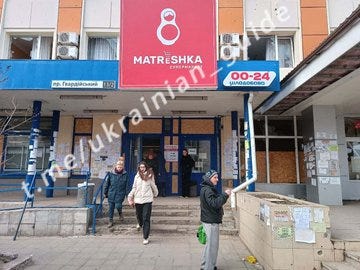
7
(1) You have often quoted reliable sources here, including Twitter and elsewhere. I was wondering if you might offer a post in which you recommend a list of suggested sources, perhaps with any caveats that might accompany each one?
Unfortunately, there’s not one or two sources that are perfect or trustworthy, and accurate analysis is more about a long term understanding of which things to keep or discard. For the record, I subscribe to a wide variety of both Twitter, Telegram, and many web sources, and dutifully (and sometimes tediously) skim them all daily to create a composite picture of what’s going on. There’s dozens of top accounts on twitter, over 80-90 that I follow on Telegram, and then various website sources.
Some of the best general ones on Telegram are probably ColonelCassad and Russia’s Rybar channel, as well as AnnaNews, Intel Slava Z, and the official Russian MoD channels.
On Twitter, the most reliable channels which have actual integrity and professional off the top of my head are:
@GeromanAT
@vicktop55
@rwapodcast
@Suriyakmaps for the best, most reliable up to date maps
Also the best updated web maps of the war are:
Map 1
Map 2
Map 3 (with unit placements)
(2) I'm also wondering about the timing of the Nord Stream attack, 26 September.
Unfortunately this story you asked about is the first time I’m personally hearing about it, so that’s one I can’t really give you a good answer. However, the only thing I can say is that if you’ve read the Sy Hersh Nordstream story, and if you believe it, then you’ll note that in that version of events, the NATO team placed the explosives on the pipe a very long time before actually setting it off. In fact, there was a whole section about how they were trying to figure out a way where the explosives can sit dormant and be activated later, which was a very difficult problem to solve.
So, the rumor you gave which seemed more improvised on the spot, would clash with that version of events which describes a much more planned out scenario with the decision to blow up the pipeline already made months prior, rather than ‘on the spot’ due to some hypothetical ‘leak’ by MBS.
The truth is, we all saw the writing on the wall and knew the pipeline would come down long ago. I actually told close friends several years ago that pipeline would never reach completion. It’s too geopolitically sensitive, and my prediction in that regard came true.
Here’s a video of a full two minutes of US politicians basically telegraphing their exact intentions long ago to disable the pipeline. In short, this was something decided long ago, and was not some rash decision on a ‘whim’ because Putin met Scholz etc. It was basically a fait accompli.
(3) Russia seems to be rolling out bigger weapons systems and escalating in certain tactical ways only after the "collective west" does it first. For example, the Nord Stream and Kerch Strait Bridge attacks saw a dramatic uptick in Russia's attacks on infrastructure. More recently, we see Russia deploying glide bombs after the US began pushing JDAMs. These are only a couple examples among many, but I think this point is clear. So the question is: What is next in the escalation escalator? Which weapons systems might the US roll out anew in this conflict, that would spur Russia to respond with something it has thus far held in reserve? Is it possible to see ahead in this regard?
Well, first let me say that Russian glidebomb roll out has nothing to do with a tit-for-tat escalation. It’s simply a byproduct of their not having these newer bombs ready before, and the vast industrialized increase in their weapons industry production allowed them to finally start pumping them out. They would have used them en masse if they could at the start of the war. So some of these things you mention are not truly causal in relation.
For instance, in yesterday’s mass missile strikes, Russia was said to have used 6 Kinzhal hypersonic missiles. It’s easy to read into this and say this was some sort of punitive and escalatory ‘response’ for some perceived act, like Ukraine’s recent cross-border terror attack on Russia’s Bryansk region. But in reality it has no connection to that, it’s simply Russia utilizing weapons which are no longer as ‘scarce’ as they once were due to the mass increase in production.
Russia produced something like a dozen Kinzhals a year prior to the SMO, or some paltry number like that. Now:
The Russian Federation has increased the production of the Kinzhal hypersonic missile system, said the head of Rostec Sergey Chemezov. "I got into production a long time ago, initially there was no need for such a quantity. We are now increasing it," Chemezov said in an interview with the Military Acceptance program. He stated that Rostec is currently producing colossal volumes of products for the RF Ministry of Defense. "Volumes have grown significantly, in some cases by 50 times," Chemezov said.
It’s as simple as that.
But to answer the hypothetical question of what kind of weapons system might Russia reciprocally still escalate to that they haven’t used yet, in response to Western/Ukrainian usage, I would say that there’s no real weapon system Russia has ‘held back on’ which they have yet to use. Rather, it’s the types of targets which they held back on and can escalate to hitting.
The obvious is they haven’t targeted Ukrainian leadership yet. An example: yesterday the entire top leadership of Ukraine from Zelensky, to supreme commander Zaluzhny, to head of SBU Budanov, and many more, were all sitting in one place at the funeral of some famed Ukrainian Nazi recently liquidated in Bakhmut.

Russia could have easily wiped out the entire top leadership thereof with a precise Iskander strike. Clearly, the message is that they have no interest in killing the leadership. But this is one point of escalation where ‘headroom’ still remains, if you get my drift.
Only other thing I can say is, recently Ukraine started using not only chemical attacks as can be seen here: (warning graphic)
But they’ve also begun using tear gas to smoke out Russian trenches. So Russian-LDNR forces have begun to reciprocally use drones which drop tear gas to now regularly smoke out Ukrainian trenches as well:
Video 1
So, like I said, there really isn’t a particular weapon system Russia hasn’t used per se, it’s more about the quantity and the targets which they are still ‘holding back’ on, and can still escalate to.
8
What are the Russian objectives in this war?
Most commentators and commenters focus on obvious goals, but it seems to me that Russia's enemy has never been the Ukraine, but the CIA and their NATO mask.
If I were the Czar of All the Russias, it would be obvious to me that the power in control of the US has made it perfectly clear that I cannot simply defeat Ukrainian forces, demilitarize Ukrainian land, and call it a day. And sometimes it seems to me that the Russians are acting in ways that indeed suggest less-than-straightforward goals.
Or am I imagining that?
SImplicius -- with your detailed study of this war, do you see clear evidence of straightforward or not-so-straightforward Russian goals?
This is a very good question because it leads me to say something quite heterodox that many people will find surprising or shocking and will likely misinterpret as some sort of sign of either weakness or waywardness/poor planning on Russia’s part.
But the simple fact is: Russia’s objectives in this war are fluid. One of the ways we know this firstly stems from the understanding of how military campaigns are planned. You have to first understand that military campaigns are not just built around someone’s ‘whim’ or a particular general or leader’s ‘feeling’ on a certain day. There is very strict doctrine and rules surrounding the planning that could be compared to regulations and protocols on any given job.
There are mandates and doctrines that require various contingencies, B Plans, and many other such things. This is simple logical redundancy, precaution, etc. No military campaign is planned with just one layer of pre-set goals.
So, what we can deduce from that is, Russia likely has a certain set of tangible goals, but there is also a layer of flexible contingency built into it, specifically in order to leave ‘room’ for the various possibilities that can occur, like NATO entering the conflict, various falseflag scenarios, etc.
The overt, top level and most critical surface objective is the liberation of all current legal and constitutional Russian territory. This primarily includes the four regions that Putin signed constitutionally into law as being part of the Russian Federation in September 2022: DPR, LPR, Kherson, Zaporozhe.
The next most important objective is the defeat of the Ukrainian armed forces to the point of unconditional surrender. While also crucial, it is not as absolutely critical as the above. Although of course it would be a grave loss in many ways if Russia were not able to fulfill this objective, but it’s not as big of a loss as not liberating its own constitutional territory and allowing it to remain occupied by an enemy force.
They haven’t ‘officially’ announced it, but it has been signaled in a variety of unofficial ways through various governmental mouthpieces and highly connected officials that Russia intends to include other regions into the annexation plan, most notably Kharkov, Dnipro, possibly Sumy, Odessa, etc.
Apart from this, and although this infuriates even many pro-Russian supporters because they so badly want things to be clear cut and easy to understand, Russia is playing its cards ‘close to its chest’ for the reasons I mentioned earlier. It wants to remain flexible in order to respond to NATO’s moves. If Russia telegraphed all of its exact plans and objectives, it would give the West opportunities to try to countervail them. This way, Russia can keep them guessing.
But ideally, of course, certainly Russia wants the total surrender of the AFU and regime change in Kiev to a non-Western puppet leader who will oversee years of demilitarization of the AFU and have strong links to Moscow to make sure Ukraine stays demilitarized. A sort of ‘occupation’ can also be in the cards, where a certain contingent of Russian peacekeeping forces stay in country to make sure there are no covert attempts at militarization. After all, this is no different to how US does it—it continues to have military bases in almost all of its formerly conquered countries, from Germany, to Japan, etc. The purpose of these is really to keep a boot on the neck of these countries, making sure they never militarize too much.
In short, Russia’s chief goal and worry is to keep from being thrown off-balance by the variety of tricks and trump-cards that NATO has in store for the region; like the various destabilizing provocations they can ignite at any time—i.e. Transnistria, etc.
With that said, those are the ‘straightforward’ goals, and you asked about the not-straightforward ones. There is some evidence to conclude that ‘secret’ goals include the demilitarization of Europe/NATO by way of allowing them to send all their stock to Ukraine for easy destruction. It’s a very convenient way for Russia to create massive force disparity because Russia’s industries have a huge headstart against European arms industries which are in bad shape. That means Russia can replace its losses whereas the West can’t, at least no where near as quickly.
Evidence for this includes the fact that Russia has not taken out the bridges over the Dnieper and continues to allow the tanks and various heavy equipment to stream in where it can be conveniently demilitarized.
And of course, there are larger geopolitical goals—Putin himself has stated many times that in some ways the SMO was a boon because it allows Russia to forcibly restructure its economy for the better by having its industries forced into enacting import substitution so that Russia can become even more self-reliant (it’s already arguably the most self-reliant country on Earth in many ways).
Also, I do believe that Russia sees the growing discontent in the West, the friction and growing grass roots division between Europe/US, and this is by far the ultimate overriding goal, which is the slow deterioration and eventual disintegration of both the EU and NATO. NATO currently thinks they’re getting ‘stronger’ because they plan to add a few weak members like Finland and Sweden, but in reality their foundation is cracking (not least of which reasons being the closer they get to adding new insignificant members, the closer they are to losing their most geopolitically significant member—Turkey).
9
1. With the far higher number of shells fired from Russian Artillery, do they have better Metallurgy inside Russian gun barrels or are these guns being revolved for Preventative Maintenance on some kind of Practical/Scientific basis ?
As for the shells and metallurgy, it’s difficult to know for certain but it does seem to be the case. Simply because there were many specific reports of NATO SPG’s losing their barrels very early in the life-span compared to Russian variants. For instance, famous photos of the Polish AHS Krab with its barrel blown off were shown not long after it was delivered, and certainly not long enough to hit the 4000-7000 shells life span it’s designed for. Similar reports of French Caesars breaking down, etc.
However, it should be noted that in AFU’s case, many of their systems’ failings ended up happening due to the crazy mishmash of ammo/system types they’re forced to juggle. Just read this report here (and there are others like it):
TLDR: AFU in some cases accidentally, in others out of sheer necessity/no choice, used wrong/different propellant types in mismatched systems, M777 propellant in Krab barrels etc, causing the widespread premature failures of the barrels.
Only definitive thing I can say is that there were various reports from the Russian side that they are finding the barrels are able to go much longer than intended. For instance the factory life span is officially around 1500-3500 shots on many systems, give or take depending on the system. But they are finding they can go 7000+ etc. And there have been many lamentations from the Russian side about using tanks primarily as indirect fire artillery (with HE shells). This is a big problem because HE shells apparently put much greater wear and tear on the tank barrels.
Unfortunately I haven’t seen specific reports addressing or showing barrel replacement but it’s a logical, educated guess that the Russians are doing this, particularly since we’ve seen things like trains loaded with SPG’s headed back to Russia for repair, where the SPG’s didn’t appear overtly damaged—which likely points to their going for a barrel re-up.
The thing is, with tanks this is likely not as big an issue because the lifespan of most tanks in the SMO is probably not even high enough to worry about the barrel wearing out. But with SPG’s which are much safer in the ‘rear’, they rarely get taken out, and so their barrels do get worn down. With that said, SPG’s also likely shoot a lot less. The reason being that, they’re often called out once or twice a day for a specific fire mission on a designated target. Whereas tanks are often used to just sit there for an hour bombing away nonstop at various random fortifications and targets in an ‘at will’ fashion (i.e. just keep shooting whatever you happen to see).
Also it should be noted that not the entire barrel needs to be replaced but the ‘barrel liner’ inside, which is a separate metal sheath that resides inside the barrel.
2. With the recently reported Chinese Diplomacy of bringing the First Step of rapprochement between Iran and Saudi Arabia, doesn't this seem like a Wooden Stake in the Heart of the War Monster in Washington, District of Corruption?
Well, it definitley does. However there are some nuances, such as the fact that at the same time, SA is signaling a deal for rapprochement with Israel and its own nuclear program as well: https://www.zerohedge.com/geopolitical/saudis-want-civilian-nuclear-program-exchange-normalization-israel
With that said, the simple fact that this opens the door for SA and Iran to both join Brics in the medium-term future is certainly a world-quaking possibility. Only problem is, most of these things will likely take far longer than we’d like, so I can only file it away as a future thing to look forward to—but the direction it outlines is definitely very promising.
The Chinese Yuan has reportedly been steadily climbing up the charts recently of most circulated global currencies, at #5 now. If China can truly woo Saudi Arabia and Iran into joining BRICs and then slowly bring them toward more trade turnover in Yuan, then it will be the true final nail in the coffin of the US dollar supremacy, petrodollar, ‘privilege exorbitanté’, etc.
But, like I mentioned, I do think there are still many pitfalls and detours ahead, as the US / banking cabal will go down fighting.
10
Does Putin realize that the Western/ Atlantean interests are perpetuating a fraud by stealing the "aid" with both hands? Will there be a cease fire like the North and South Korean border where a buffer zone is established and both cultures can lick their wounds and move on? I'm a proud American and I don't like feeling like I'm on the bad guy team. What is the best I can hope for in this insane situation?
Well, as to the first part of the question, Putin most definitely knows exactly what the West is doing in that respect. He’s openly called out their malicious duplicity when it comes to everything including aid many times.
However as to the more complicated second question of a Korean style ceasefire, that is most definitely what the conflict is trending towards. The only question is, will Russia/Putin have the wherewithal to continue on to the end, or will pressures be too great by that point.
I covered this in much greater depth in this article:
Where I outlined how the dark clouds are beginning to gather in the West towards an acceptance of a ‘Korean scenario’. And at the start of this very mailbag report, I even posted this:
And I mentioned earlier that I believe after Ukraine’s last late Spring/Summer hailmary ‘hurrah’—after it fails—they will begin looking for the off-ramp. Recently even Stoltenberg (and his words were echoed by other officials) openly said that this war will ‘definitely end at the negotiating table’, but that it’s their job to simply give Ukraine the best negotiation position possible in the next few months.
So, if you read the tea leaves, you’ll note that most Euro technocrats have already resigned to such a conclusion, but they simply want Ukraine to make one last big push, to push Russian forces back as much as possible so that once negotiation comes, Ukraine will be left with more of its territory after the inevitable (to them) ‘ceasefire’.
But the counterargument from Russia’s side is that Putin has already been through the infamous betrayals of Minsk 1 and 2 agreements. It’s been notably highlighted in recent times just how openly the craven Western leaders used the Minsk agreements as mere covert re-arming periods for Ukraine, with the inevitable plan of hostilities.
So—it’s difficult to believe that Putin would ever again trust the West in any ‘peace agreement’ or want to subject himself and Russia to such feckless dishonesty and deception.
However, if it were to happen, it wouldn’t be per Putin’s inherent wishes, but rather as a result of some form of necessity or lack of choice. In the same article of mine mentioned above, I explained at length how, even if Russia were to capture everything east of the Dnieper, it would be extremely difficult for Russia to carry on to the next phase. The bridges would at that point likely be already blown. That means for Russia to continue with the operation, and capture Odessa, Kherson, etc., they would have to carry out a massive redirection and reorientation of the entirety of their forces through the north, by way of Belarus down into Kiev and the lands ‘west of the Dnieper’.
There is a possibility that perhaps such a massive reorientation would be viewed unfavorably at that time under an added confluence of political pressures both from enemies and weary allies (China, for instance), which could corner Putin into compromising on some Korean scenario. Such a possibility would be strengthened if the Russian army should become exhausted or continue to have extreme ammo problems—the confluence of all these things combined could lead some to see no other way out. I’m hoping that won’t happen, and personally I don’t think it will happen, but am merely outlining the possibility, as remote as it may be—just to give an idea of the breadth of directions the SMO could take as per the original question.
And further, in the quoted article of mine, I explained how some leading figures had already foreseen exactly such a scenario long ago. For instance, ex-presidential advisor Arestovich, back in a 2019 interview foresaw the logical playout of the entire conflict. Not only did he nail the rough time period the conflict would start, but even predicted it would end in such a Korean stalemate, which would result in a second war resumption around 2025, and even possibly a third around 2028.
Those who are skeptical need only to look to the 90’s where Russia in fact already went through exactly such a scenario with the Chechen wars, where the first ended in a frozen stalemate, only to be necessarily later resumed in the 2nd Chechen War.
The truth is though, it is difficult to predict because the current war is ‘beyond the pale’ of anything we’ve seen before for Russia. It doesn’t compare to the Chechen wars in scale, and there are many firsts which warrant closer comparisons to WW2 than anything else—like Russia’s first mobilization since the Great Patriotic War. So it’s hard to make projections when we’re so far beyond familiarity—but the utter existential nature of it certainly points to a continuation of the conflict til the ‘very end’ rather than a Korean style scenario.
11
I'd like to have a better understanding of Prigozhin/Wagner's relationship with the Russian military establishment. Whatever you can write that would help clarify when we are being trolled, when we are witnessing maskirovka ( маскировка) and when we are witnessing genuine, important disputes that could affect military performance, would be appreciated. Thanks
It’s difficult to know with true certainty, as much of it is shrouded in secrecy. However, if the official historiography about Prigozhin’s origins are true, then it’s clear he likely does have a deep relationship with Putin and the Russian gov’t that goes beyond the surface stuff we see.
He is a very, naturally sarcastic character so a lot of his antics are just psychological games, that much is clear. Just look at today’s new announcement: Video 1.
However, there’s reason to believe some of the tensions/frictions between him and the military authorities are real. Contrary to what the Western tabloids will have you believe, Putin is not an emperor or all-powerful ‘Tsar’. He doesn’t control everything and it’s possible for someone to be friendly with him, yet have a dissenting relationship with the MoD.
Recently, Prigozhin even targeted Shoigu in a very ‘personal’ way that would likely not happen if the antics were stagecraft or theater. Shoigu’s daughter is dating a guy who apparently has shown inclinations of being anti-Russian SMO, as he was caught ‘liking’ anti-SMO posts on Instagram/social media. This is a big scandal to an extent, and Prigozhin highlighted it to pour salt in Shoigu’s wound. Such an attack on a leading silovik’s own daughter would likely be beyond the boundaries of mere ‘theater’ or ‘maskirovka’. So it leads us to assume some of the tensions are in fact real.
With that said, it must be understood that Prigozhin is not a ‘commander’ and does not make the battle plans for his soldiers, other than ostensibly. He has no real military experience or knowledge. That means Wagner is in fact commanded by Russian military and falls under their command structure and purview. They aren’t some independent ‘lone wolf’ group that just does what they want laissez-faire style.
After all, I had explained in a previous article that Wagner doesn’t really have a ‘back end’ of their own, in terms of supply/logistics. They rely wholly on the nominal Russian forces for that.
Recently we were offered a small glimpse into the inner workings when Prigozhin explained how an underling of his works as a laison with the Russian MoD office to coordinate various logistical issues. But to drive home the answer more specifically on how that relationship works: one of the ways is that, many of the high ranking members, commanders, etc., of Wagner are in fact Russian intelligence officers or ‘recently retired’ higher ranking Russian officers which themselves have direct links and established relationships with the upper staff of the Russian MoD structure. It’s not like Wagner is comprised entirely of random people from the street. No, many of the leading positions are led by ‘laterally redeployed’ Russian officers (especially ‘retired’ ones) from the actual Russian Armed Forces.
This helps to efficiently integrate coordination between the two forces on the battlefield, as Wagner often relies on direct Russian military support at every stage of battle, from CAS and air support, to artillery, EW, engineering, and other special units, etc.
For instance, the DPR commander Khodakovsky lamented in a post last month how Wagner was getting ‘preferential treatment’ from the Rus command for a long time, which included their own personalized on-call Iskander and Kalibr cruise missile daily allotment. He said that Wagner was allotted something like two Kalibr missiles and one Iskander per day. Which means Wagner would have to call some Russian missile brigade headquarters to coordinate the strike as they see fit, since Wagner themselves obviously doesn’t have those capabilities.
Second part: Excellent question about Wagner vs regular military.
Who are those guys?
Why are they there?
Seems weird.
Well, certainly Wagner is there to help pad the overall troop numbers as Russia has committed a much lower amount of total troops than most people think, as I outlined in this article:
However, at the end of the day it’s a simple undeniable fact that Wagner to a large extent is also there for 1. plausible deniability 2. to keep excess losses off the nominal Russian ‘books’ and stat sheets.
This is the harsh reality, but is standard operations. Yes, it’s greatly in Russia’s interest to have lower official casualties for obvious reasons. Wagner provides the opportunity for Russia to utilize a trained shock force in city battles which typically produce a lot of casualties, and basically have all those casualties ‘off the books’.
We know Wagner is suffering far fewer casualties than the AFU in Bakhmut, after all they themselves admitted it several times. Just listen to this Australian mercenary who fights in Bakhmut, he says Wagner’s losses are much lighter than people think, compared to the AFU’s horrendous losses: Video 1
And of course there’s this:
Video 2
Video 3
But with that said, Wagner’s losses are still likely the highest of any frontlines simply owing to the nature of city assaults. Thus, this is one of the primary purposes Wagner serves—to do the ‘dangerous fighting’ without adding to Russian army’s official casualty tallies. Once again, this is standard operating procedure, for those who might naively think otherwise. It’s a simple logical and very smart thing to do from the Russian MOD’s perspective.
12
Last question: Russia seems to be mostly acting in response to US aggressions, and escalating in-kind. So we usually ask: what are the US objectives in this war? The publicly stated objectives to "weaken Russia" or "regime change" or "to prevent nations from invading sovereign countries" or etc. do not hold any water. There is something deeper and more fundamental going on, which is not being discussed publicly. And it could be that the US is acting to counter some deeper plan/agenda of Russia (probably involving China et al.). Of course there is the obvious explanation, Russia has now challenged US meddling in a variety of nations (Georgia, Syria, Ukraine, Kazakhstan, etc.; Wagner reportedly expanding in Africa; etc.) while the US is suffering a number of internal problems and experiencing general decline...one can see why the US would try to counter this challenge, especially if the pain is suffered by "allies" in Europe in a way that makes them increasingly dependent on the US (while spinning Russia's actions to terrify allies into maintaining allegiance).
But...what is Russia planning, beyond simply opposing the US? We hear about new exchange currencies, etc., but that has been rumored for years with no concrete steps taken.
It’s a good question though I think I mostly answered it already in one of the others above, though I’ll repeat some of it.
Firstly, watch the segment of influential think-tank STRATFOR founder George Friedman I posted on question #3 above. He explains precisely what US and UK’s generational ambitions against Russia have classically been.
Many wise alt-historians argue that virtually all global conflict for the past ~150 years has revolved around this central issue: which is the prevention of the formation of a Russia-German alliance which would threaten global order.
Germany has classically been the manufacturing and innovation powerhouse of Europe, or the world. And Russia is the well-known natural resources powerhouse of the world. Combining those two together creates the only known force that can dislodge London’s global hegemonic supremacy.
If you dig deep enough into Lord Milner’s roundtable movement, Cecil Rhodes and that entire rabbit hole, you’ll quickly learn WW1 and then WW2 were all about pitting Russia-Germany against each other to weaken/destroy them both, and make sure they stay hostile to each other, to retain Anglo supremacy. Here’s a good article on the topic, and companion piece to Friedman’s speech. Or this one: Article 2.
In general, of course, they want Russia as disconnected to Europe as possible as well. For the US, it keeps both Russia/Europe poorer, more subserviant, and most importantly—more reliant on US products, energy, etc. But Germany is the real omphalos for the whole thing.
Thus, in many ways, one can argue that pushing Russia into carrying out the SMO was primarily about nullifying the Nord Stream 2 pipeline which was getting ready to go live very soon before the onset of hostilities. US critically needed to get rid of that pipeline, lest it lead to a new era of Russo-German relations and economic cooperation. So US simply dialed up their pawns in Ukraine, had them begin shelling Donbass and militating towards war, and voila—they pushed the exact needed buttons to set Russia off on its present course. Then they drum-up anti-Russian sentiment in Europe based on the putative ‘atrocities’ of the war, and this very easily and neatly guarantees a whole new generation of disintegrating Euro-Russian relations. It’s really that simple.
The famous Anglo-Saxon axiom goes:
Keep Russians out, Germans down, and Americans in. - Nato’s first Secretary General, Lord Ismay, when explaining the aims behind the new military alliance


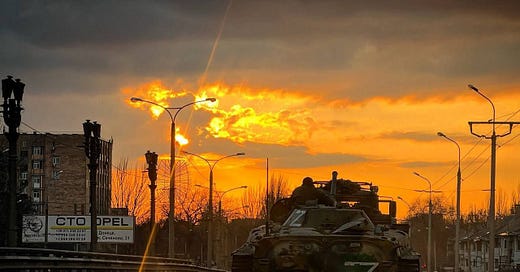


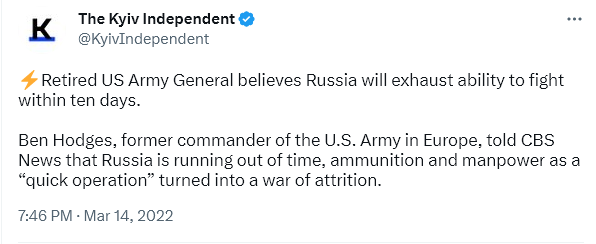





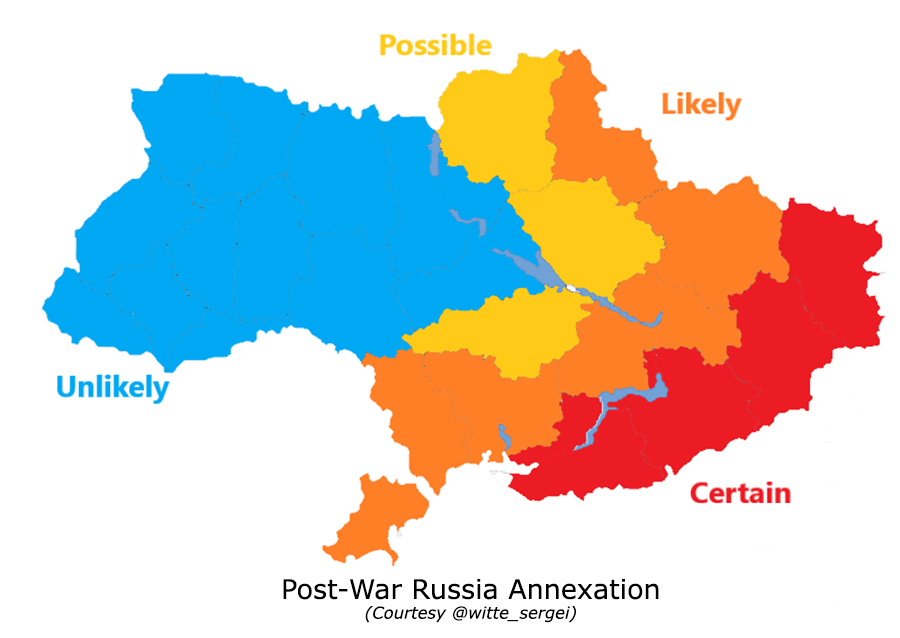

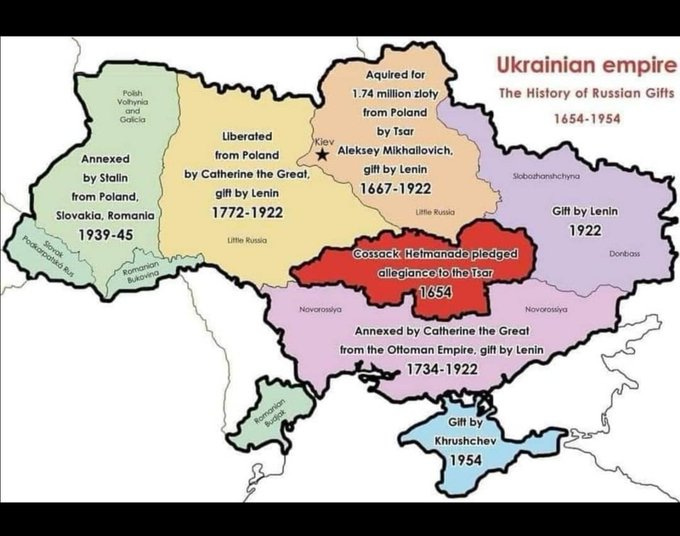
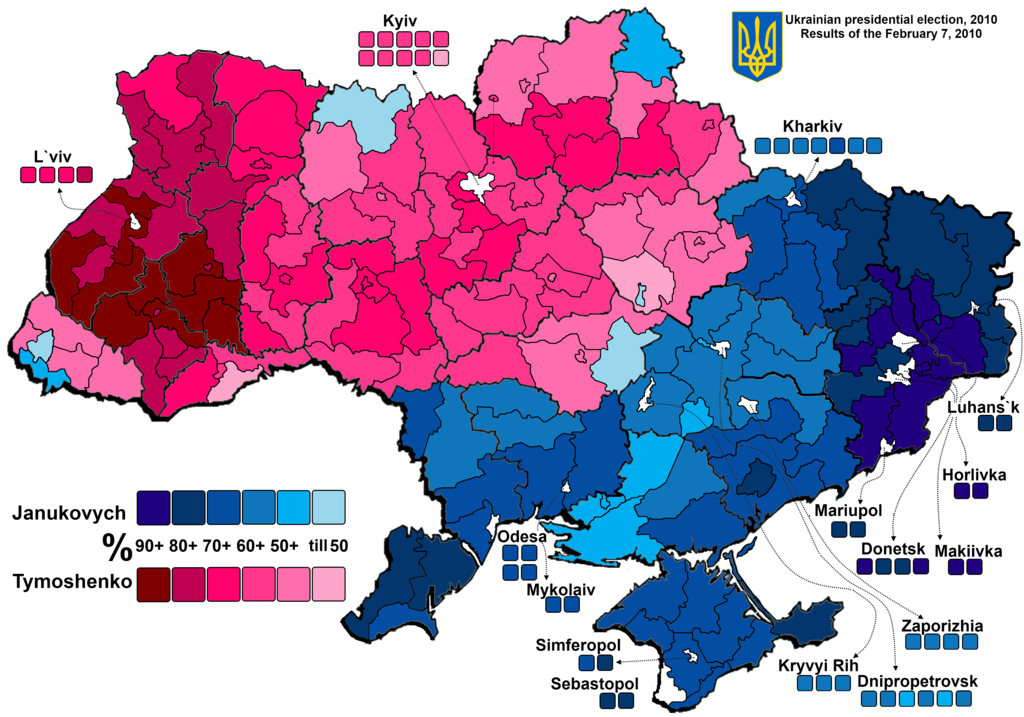



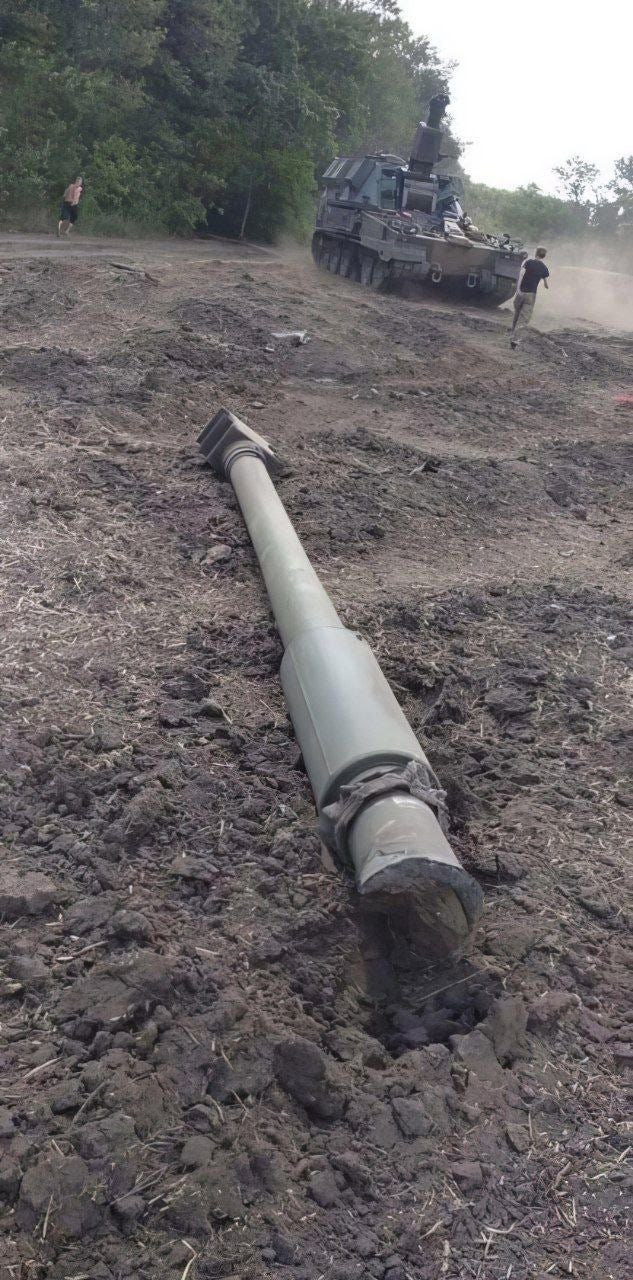
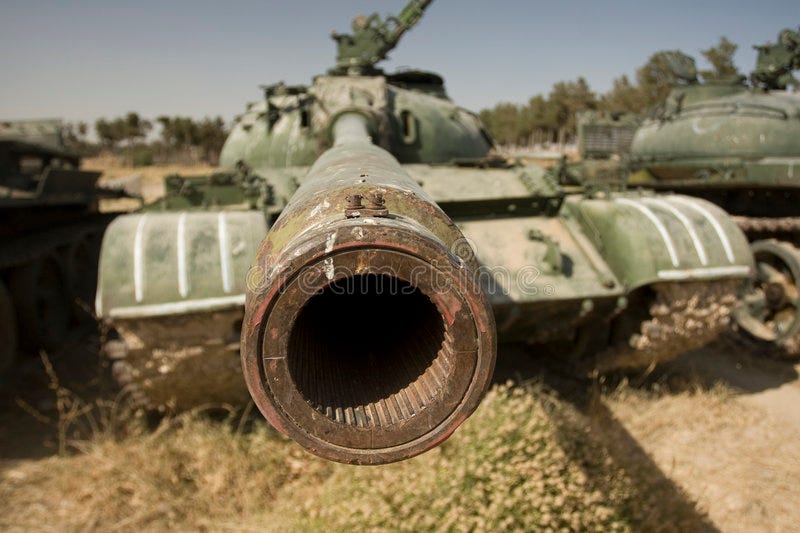

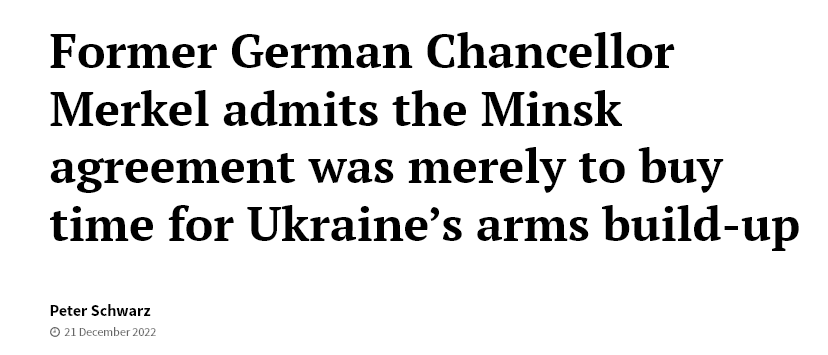

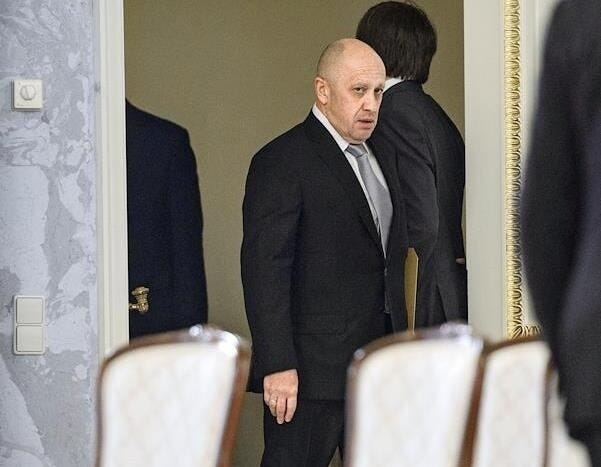

" By far the most important objectives of this entire situation are the following:
1. Destroy Russia-German relations
2. Unplug Europe from Russian energy
3. Make Europe, conversely, dependent on US energy
4. Bankrupt and de-industrialize Europe to keep it submissive to US hegemonic power
And guess what? On pretty much all of these points the US has succeeded with flying colors. A grand, unparalleled victory. "
This - and I have believed for abut 3 years now.
Ergo - chaos and mayhem left in Ukraine, weapons spilling over into crime and terrorism across Europe, huge losses of life, all of these are Goals of the US, not side effects, let alone regretted collateral damage.
Friedman's comments were 2015. This has been a very long term plan, and the success of the Kiev Coup was never an end goal, nor was the capture of Crimea. It was always about creating a massive pit of chaos between Europe and both Russia and the end of OBOR.
When the Georgians attacked South Ossettia, I recall seeing the first BBC correspondent there, interviewing the locals. They quite openly said that Georgia attacked, and Russia was coming to their aid. They also pointed to the civilian residential blocks behind them as being shelled - CIVILIAN housing.
The most memorable was a old Babushka standing in the street, who was fearless in her denunciations of the Georgians while wagging her finger!
And yet barely hours later, the "Official Narrative" had been set that "Russia is to blame", and such reporting, even from their own correspondents, was BBC-Pravda memory-holed.
This was before I'd learned to download such clips for posterity, not yet realising how controlled the Internet would become.
It would have been hilarious today to have a recording of what Vlad Putin said to Chimpy Bush when he confronted him at the Olympics about it.
Watching again in real time the outright lies over Syria, and Libya, has been the final straw. The treatment of Corbyn, Lableak theories, and Covid-vaccine safeness, along with "Ukraine's Inevitable Victory"; chemical weapon use in Syria by the Saudi-armed Jihadists blamed upon the Syrian Govt, the CI's ISIS program... the list just goes on and on.
What is so scary is how many either do, or pretend to, still believe Western corporate media.
There are people who, caught in a terrorist blast that amputated every limb except one finger, would still use that finger on their phone to deny the explosion if that was the Official Narrative.
Thank you for your time, and effort, especially for those of us who are but free-riders on your hard work.